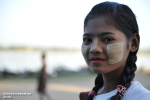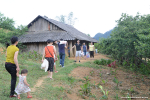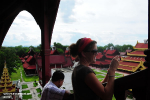A four-sided pillar in a cage between the two monuments bears an inscription consecrating Gubyaukgyi. Myazedi inscription also Yazakumar Inscription or the Gubyaukgyi Inscription, inscribed in 1113, is the oldest surviving stone inscription of the Burmese. "Myazedi" means "jade stupa" ("zedi" being akin to the Pali "cetiya" and Thai "chedi"), and the name of the inscription comes from a pagoda located nearby.
The inscriptions were made in four languages: Burmese, Pyu, Mon, and Pali, which all tell the story of Prince Yazakumar and King Kyansittha. The primary importance of the Myazedi inscription is that the inscriptions allowed for the deciphering of the written Pyu language.
Note:
Open daily and not have opening or closing time. You can visit at any time but should be in day time as it is quite dark after sunset.
You are required to wear long trousers and walk on barefoot inside the temple.
30 minutes are sufficient for your visiting time.
Address:
Location: next to the Gubyaukgyi temple, located between Myinkaba and Bagan; Myinkaba village. East of Bagan - Chauk road between old Bagan and new Bagan
Entrance fee: No
Highlights:
There are two main inscriptions in Burma today. One exists on the platform of the Myazedi Pagoda, in the village of Myinkaba (south of Bagan), in Mandalay Division. The other was discovered by German Pali scholar Dr. Emil Forchammar in 1886-1887, and is currently in display at the Bagan Archaeological Museum.






